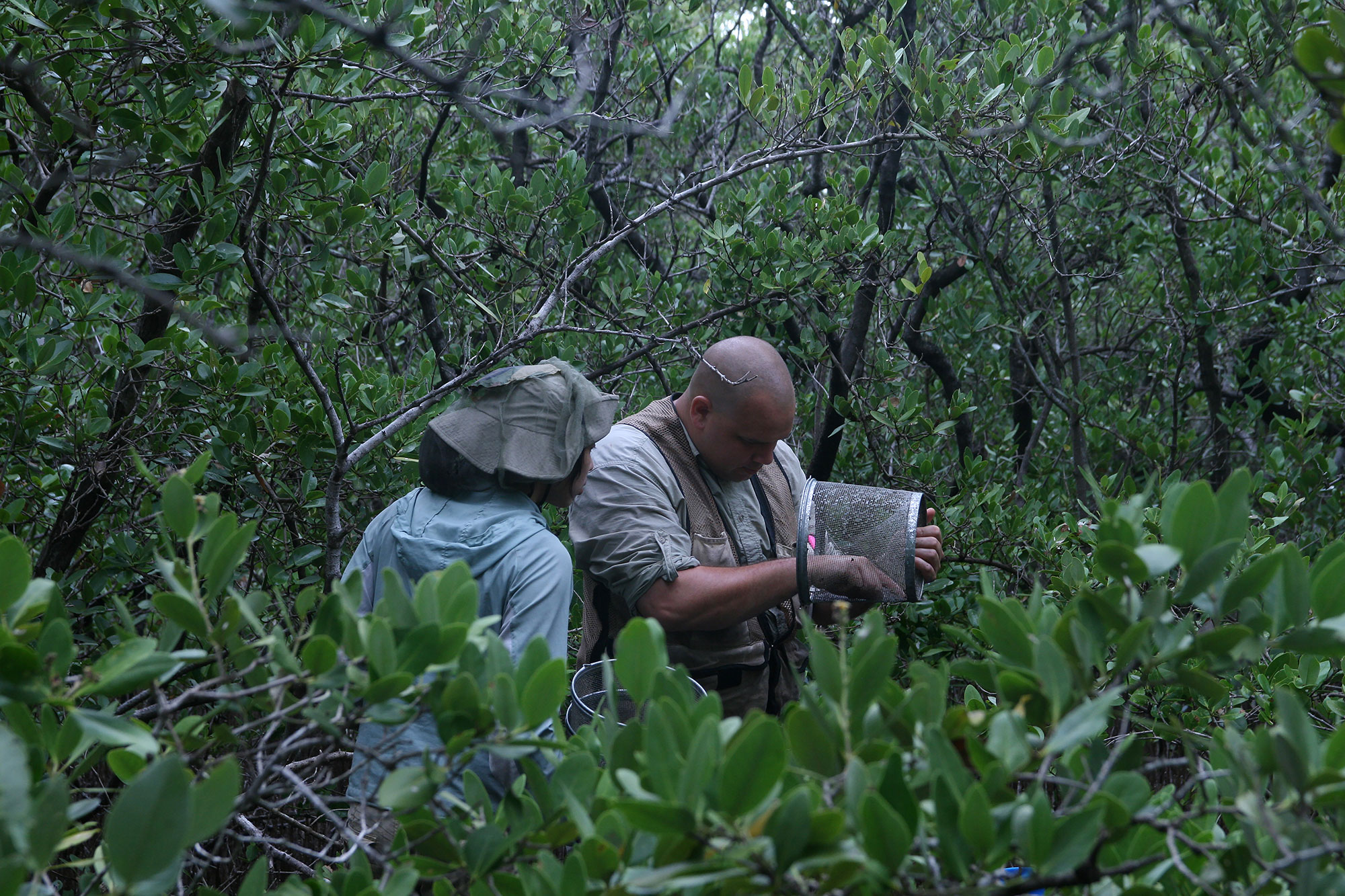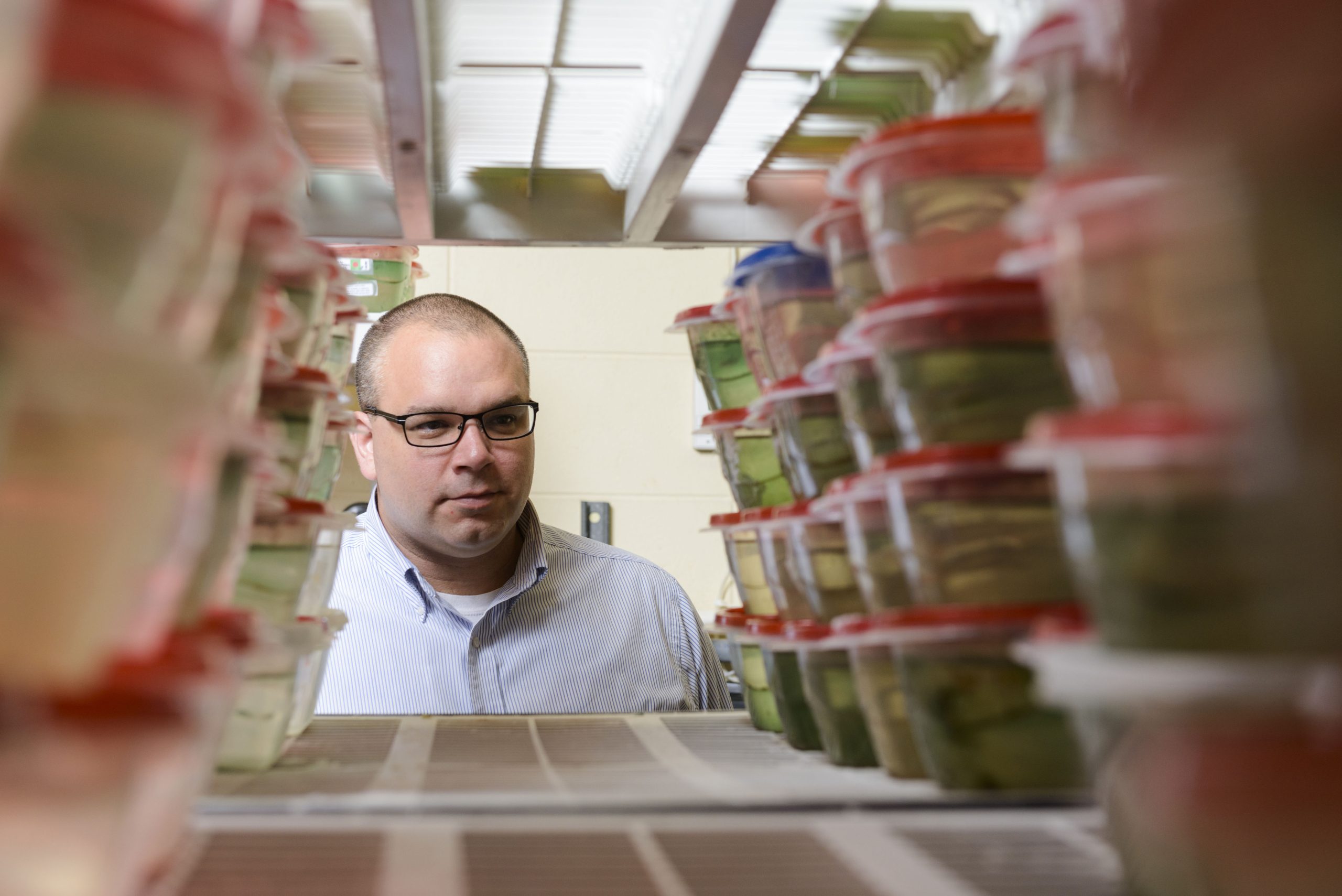Though Dr. Ryan Earley has flown to coasts off the Caribbean Sea at least once a year for the last seven years, his meccas are not the places most tourists want to see. Instead of lying out on luxurious sandy beaches and swimming in crystal clear water, Earley spends his time knee-deep in the dark sulfured sludge of coastal mangroves—looking for a tiny fighting fish.
According to Earley, the fish, commonly known as the mangrove rivulus, holds some of the keys to understanding variation in individual human aggression and violence—one of society’s greatest mysteries. And with a groundbreaking mirror system that Earley and his doctoral student Cheng-Yu Li developed, the team is equipped better than ever to know what makes humans want to fight.
“Things like fish—organisms that we don’t normally think of as being relevant to humans—are actually critical because we can do some things experimentally with these animals that we cannot do with humans,” Earley said. “They allow us to probe a little further into the mechanisms of aggression.”
The mangrove rivulus is a particularly special fish because, as the only self-fertilizing, hermaphroditic vertebrate, it essentially makes clones of itself when it reproduces. Consequently, instead of having 100 individual fish to test, Earley has 100 copies of a single individual—allowing him to place “one” fish in 100 different environments at the same time to see how its surroundings influence its aggression.
In order to test fish aggression, researchers for the last 60 years have used mirrors because fish don’t recognize themselves in their reflections. The fish “fight” themselves without causing injury and without being influenced by another fish’s aggression and temperament. The problem, however, is that the reflection doesn’t behave like a real opponent.
When two fish fight each other in real life, they fight head to tail—chasing each other in circles. But in a reflection, the fish are always head to head.
“That raised the question of whether the fish’s responses to mirrors really tell us something about aggression or not,” Earley said.
In an article published in Animal Behavior, Earley debunked the decades-old, single-mirror method, showing various ways that such experiments were not representative of a real fight. Other researchers have done the same. In one study conducted by researchers at Stanford, experiments showed that mirrored fights actually trigger fear centers of the brain instead of aggression centers.
“People have called into question the validity of the mirror image for more than 30 years,” Earley said. “But they still haven’t stopped using it.”
Wanting to fix the problem, rather than simply identify it, Earley set out to create a new research design—and over winter break last year, he and his graduate student Cheng-Yu Li hit the mark.
They realized that when they arranged two mirrors at a 90-degree angle, the resulting image, looking directly into the corner of the mirror, was a reflection of a reflection—positioning the fish and its mirrored partner head to tail instead of head to head.
“Physics tells you that if you align mirrors at a 90-degree angle, you will see a different image than you would looking into a single mirror, but applying that concept to an animal behavior question just hasn’t been done,” Earley said.
When they tested the new mirror system in the lab, they were pleased to find that fish reacted naturally. Their gills flared up, and instead of repositioning repeatedly, trying to attack the tail, they immediately engaged in motor patterns of a traditional fight.
“It works,” Earley said. “And it will be a huge change for the field.”
Though Earley’s current experiments with the new mirror system have focused on observational behavior thus far, he and his students plan to study the fishes’ neurological and hormonal reactions in the future.
“With just one little tweak, we will be able to see, accurately, what goes on in the brain as it relates to aggressive behavior,” Earley said. “Whether that research will link directly to the human brain or not is unclear, but it provides us with a platform—or better yet a trampoline—for further research.”




